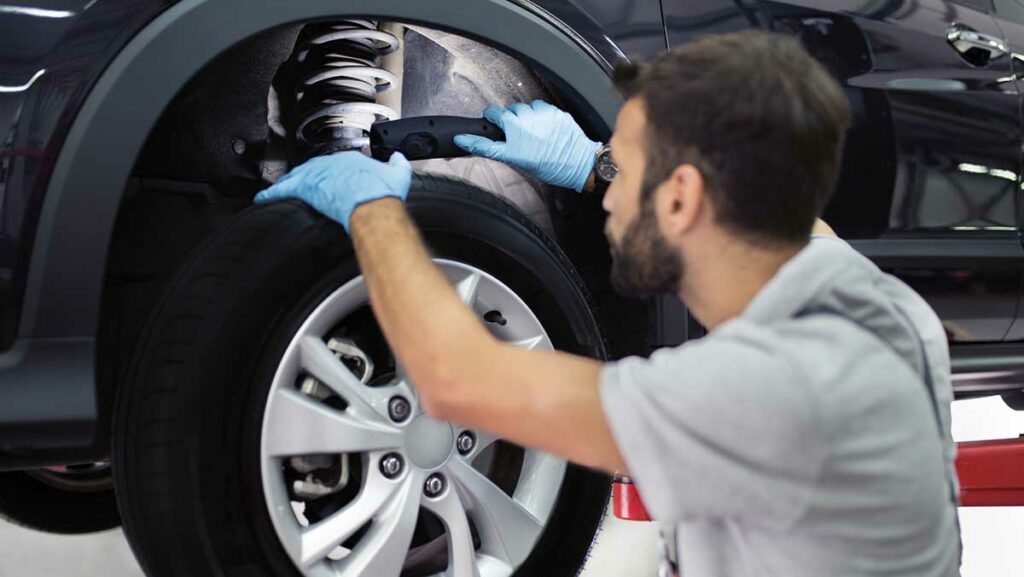Your shocks and struts play an important role in your car’s suspension system, and they help your tires stay connected to the road when navigating bumps or a pothole. Even seemingly smooth roads have imperceptible bumps, but you won’t notice them if your shocks and struts are working properly. If your ride starts to feel bumpier than usual, it might be a sign that your shocks and struts need to be replaced.
The Difference Between Shocks and Struts
While the words “shock” and “strut” are sometimes used interchangeably, both parts function differently to support your vehicle.
What Are Shocks?
Shocks, or shock absorbers, control the movement that’s produced by your vehicle’s springs when you’re on a bumpy road or brake suddenly. Shocks soften this impact by converting kinetic energy from the springs into heat energy that dissipates through the hydraulic fluid. Shocks also help control your car’s ride, braking, acceleration, and bounce.
What Are Struts?
Struts are a structural part of a car’s suspension and steering systems. Not every car has a strut, but most front-wheel-drive vehicles have them in the front of the car. Struts are used instead of the upper control arm and ball joint found in conventional suspensions, and they’re lighter and take up less space than shock absorbers.
Struts have two main jobs. They dampen a vehicle’s jolts like a shock absorber and provide resistance to bounce, and they provide structural support for your vehicle by supporting the spring and keeping your tires aligned. This helps improve steering, braking, wheel alignment, and ride comfort, and it prevents wear on other suspension parts.
Does My Vehicle Have Shocks or Struts?
Every wheel on your car is equipped with a shock or a strut, and some cars have a combination of the two. If your vehicle has shocks you can usually see them mounted vertically behind your tires. Struts are usually mounted horizontally and look like an extension of the tire. If you’re still unsure, a technician can look for you.
The Function of Shocks and Struts
Shocks and struts control the quality of your ride by performing the following functions:
- Maintain consistent handling and braking
- Control additional body and tire movement
- Reduce vehicle bounce, roll, and sway
- Maintain tire alignment
- Reduce the amount of wear on tires and suspension parts
When Do Shocks and Struts Need to Be Replaced?
Unfortunately, your shocks and struts can wear out, rust over, become damaged, or start leaking fluid. Driving with bad shocks and struts can make your ride uncomfortable and dangerous, so it’s important to have them examined if you notice any of the following symptoms of bad shocks and struts:
Visual Signs
- Leaking fluid
- Dented or damaged shocks and struts
- Unusual wear patterns on tires
Vehicle Handling
- A bumpy or shaky ride
- Poor steering response
- Stiffness while steering
- Noise while steering
- Unstable brakes
Mileage
Depending on your car and driving conditions, your shocks and struts may need to be replaced after 50,000 miles. Worn shocks and struts can wear down your tire and suspension parts—your ball joints, steering linkage, springs, and C.V. joints.
Proper shocks and struts are essential to maintaining your vehicle’s health, so remember to include them in your vehicle’s maintenance plan.
Insuring your vehicle is just as important as vehicle maintenance. If you’re looking for affordable coverage, The General has a range of policies that fit every budget and driving record. Read some of our five-star reviews and see how we put our customers first or learn more about car health from our blog.









